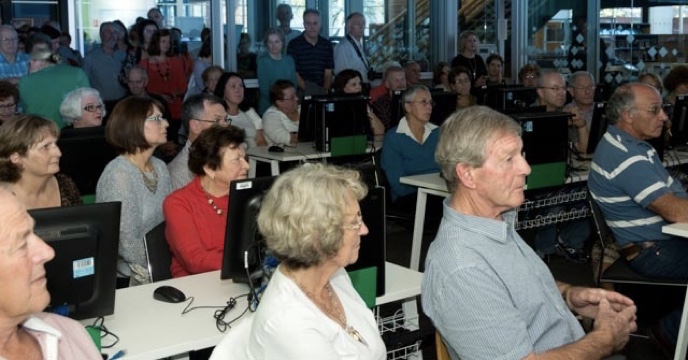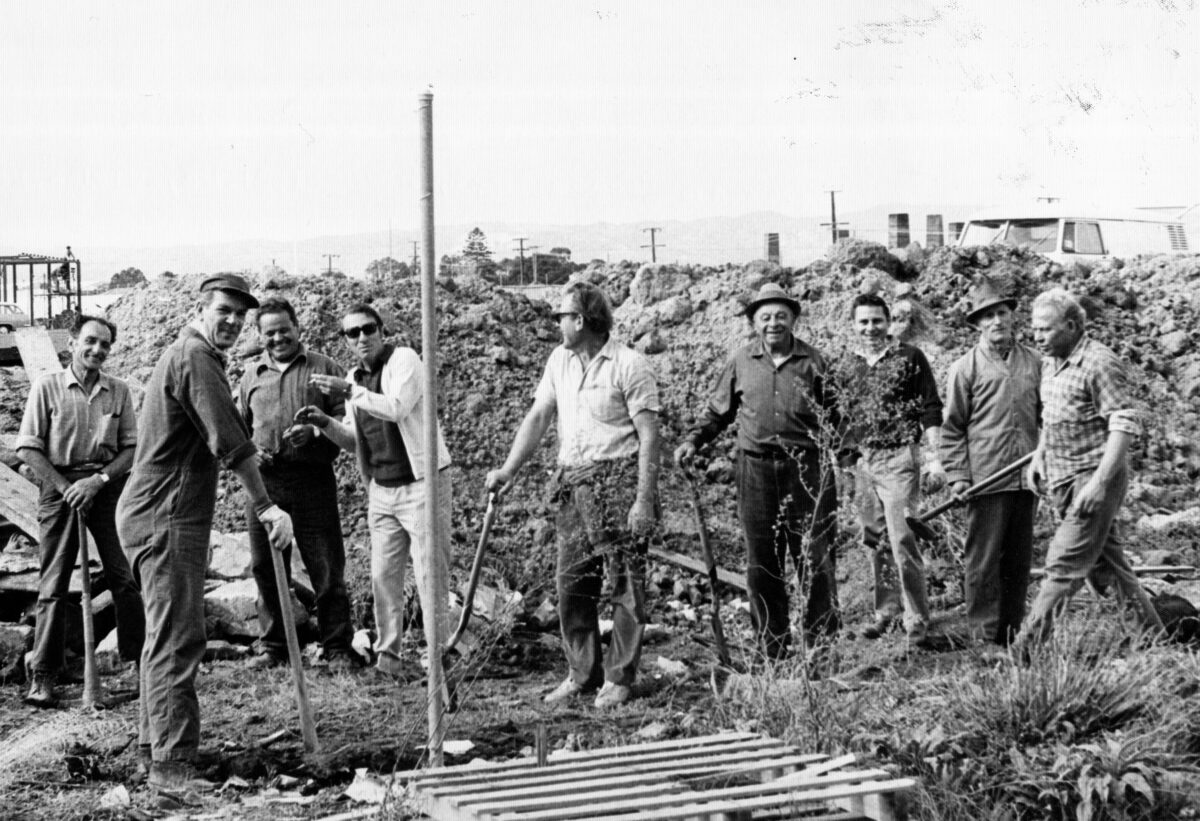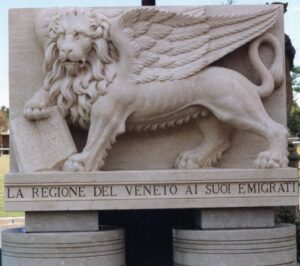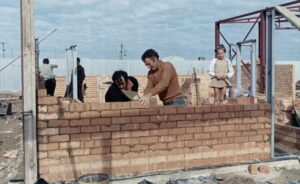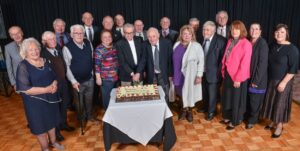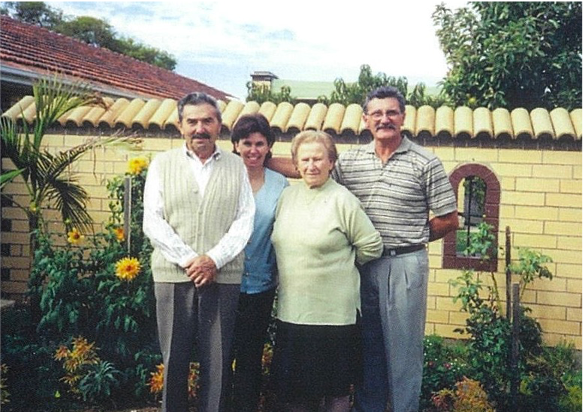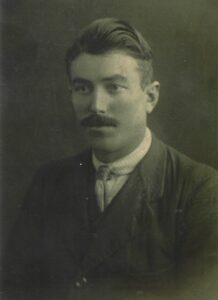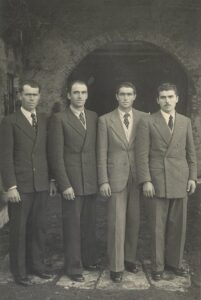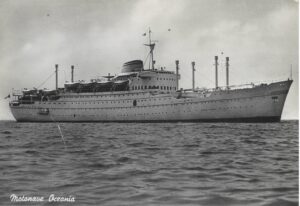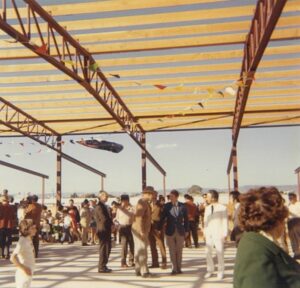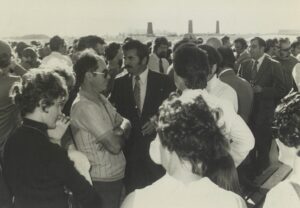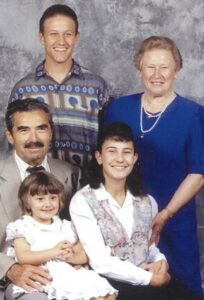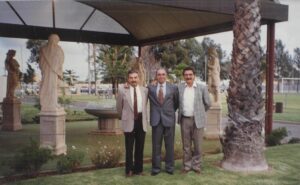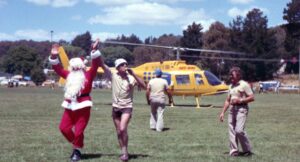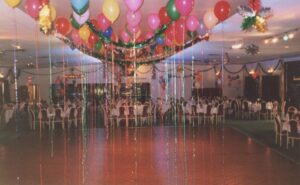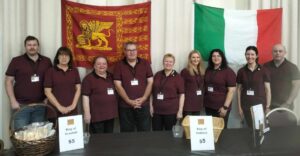Later this month, the Veneto market gardeners’ website will be 10 years old. The website was an opportunity to create an archive for the Veneto market gardeners’ oral history project which had begun in 2007. I was fortunate that the City of Charles Sturt gave me a small grant for the design which was created by Dave Smids.
The image above shows a section of the participants who were present for the launch.
Pam and Guido Rebuli in the foreground.
Launch – 24 May 2014
The launch of the website was held in the City of Charles Sturt library at Woodville and was a memorable occasion. Nearly all the 30 people who had been interviewed up to that date were present and many other guests who celebrated the achievement of the website.

Aida Innocente gave a speech and she spoke in Veneto for the first part. You’ll see parts of her speech are included in this blog. Aida had introduced me to Johnny and Eleonora Marchioro – the first people interviewed for the project in 2007 – and who generously helped to guide the project from then.

Aida’s speeches
In her speech in Veneto, Aida speaks about the benefits of the website to hear the family histories, read the transcripts and view the photos. She remembers her father, Angelo who used to speak about the older generations in Italy and she pointed out that the website contains the stories of the Veneto families who migrated and made their lives as market gardeners. The oral histories are a way of honouring the first generation who arrived in the 1920s. Aida suggested that these people are now in a museum, present in our hearts and in technology on the Internet that keeps them close to us.
Bon di.
Son qua tuti quanti oncò perchè Madaena Regan a me ga invidà. A vol mostrar el frutto del lavoro che la ga impegnada per ‘sti ultimi dodese mesi. Le storie che ghe gavemo contà, e fotografie che ghe gavemo da adesso podemo vedarle, scoltarle, ledarle su internet. E podemo dar l’indirisso del sito che Madaena la ga fato ai nostri familiari e amighi in tutto el mondo. Che bel no ve par?
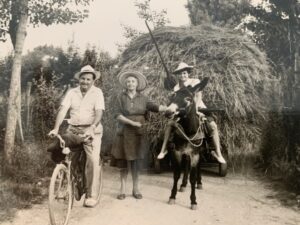
Me ricordo che me popà parlava sempre dee storie dei nostri veci. Adesso, podemo dir che tutte e storie che Madaena a ga ciapà, e xè storie dei nostri veci. Me popà el xè deventà anca lu adess un nostro vecio.
Son tuti fortunai che a storia dei nostri veci – i veci australiani e i novi australiani – a nostra storia de Veneti di Lockleys, no a sarà mai persa. Non a xè sol che a storia che tegnemo a ment dea nostra fameja, ma stà storia a sarà là par tanti altri su internet. A nostra storia de migranti, a storia dei fioi e dei nevodi de questi migranti veneti a sarà recordada e onorada. Ancò son qua par farghe festa!
Adess, son anca noantri in un museo. Ma sto museo el xè pien de vita, pien dee vose nostre, de nostre fotografie, piene dei nostri veci – quei che i xè qua oncò co noantri e i nostri veci che i no ghe xè pì. Con sto progeto dei market gardeners del Frogmore Road i nostri veci non i sarà sol che nel nostro cor, ma i sarà visti e conosui da tanti, par medo de sta nova tecnologia, l’internet.

Aida’s speech in English
I remember the people who lived on the parcel of land at the centre of these oral histories, with a lot of joy and sadness and nostalgia as these market gardeners were closely connected to my parents, Angelo and Elsa Innocente. Not just because Mum and Dad were half-case manufacturers – Dad would have called himself simply a box-maker, I’d say – but because several of the families – the Santins, the Tonellatos – came from our hometown, Caselle di Altivole. One of the families, Vittorio and Angelina Marchioro lived in our street White Avenue and were my godparents, my santoli and my parents’ compari.
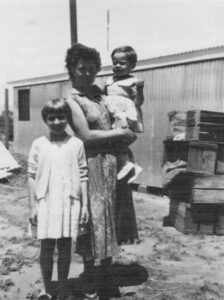
These oral interviews recorded and collected with such constancy, diligence and love by Madeleine Regan – working from time to time with others like Eleonora Marchioro and Anna Mechis – tell in microcosm the history of migration of people mainly from the Veneto region in Italy. These stories begin with the migration in 1927 of many of the patriarchs of the families featured and continue with the post-war migration of the ‘40s and ‘50s.
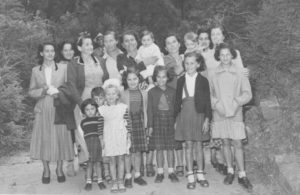
Now because of this work, all of us gathered here today – first, second, third, maybe fourth generation descendants of these migrants – have the privilege of knowing that over 64 hours of these oral histories – our history – are safely deposited at the State Library of South Australia. And now with this website we are able to share freely and easily much of our history with family and friends far and wide and with the world!
Why is this so valuable?
Because these stories tell our story; they offer first-hand knowledge and insight into the migrant journey; they ensure that these particular experiences are preserved and shared; they formalise this history and they ensure that the contribution of this particular migrant community to their local area and to the building of this state, is recognised. The story of migration is a big part of the story of nation-building.
These local oral histories affirm the lives and identity of all those who so generously contributed their stories and in so doing affirm the lives everyone connected to them.
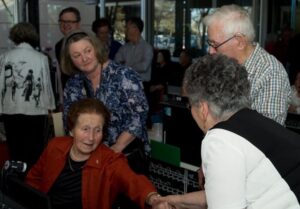
There are so many stories and memories recorded in the 64 hours, many of which you can now access through the website. I hope you will all visit the website – log on, explore it, play with it, share it with your family and friends, engage with it. It promises to be a rich and revealing journey!
Aida Innocente
Giuliano Berdusco – edited the Veneto speech
Other speakers at the launch

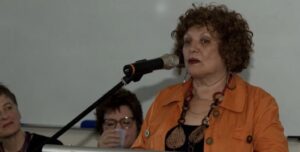
- Johnny Marchioro, son of Angelina and Vittorio Marchioro
- Lina Campagnaro, daughter of Maria and Narciso Ballestrin and niece of Isidoro Ballestrin.
- Ray Tonellato, son of Mary and Albert, launched the website.
- Linda Lacey, Cultural Heritage Officer at the City of Charles Sturt, who had supported the project for several years spoke about the local history featured in the stories of the families on the website.
- The Mayor of the City of Charles Sturt, Kirsten Alexander, also acknowledged the importance of the website.
A decade of the website
The website continues to attract new readers and subscribers who are interested in the history of the Veneto market gardener community in the western suburbs of Adelaide in the area the families called ‘Lockleys.’ The blogs generate the memories of second and third generations – and others in Adelaide and in Italy and Canada – who share the family experience of migration and settlement that is usually not recorded in history books. The website is a living archive of the lives of the Veneto market gardeners who settled with their families at Lockleys between the wars. It shares their legacy.
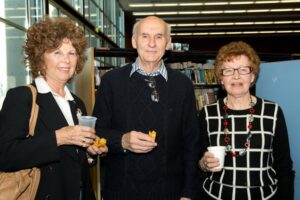
Thank you to Michael Campbell for his generous ongoing commitment to managing the website. I was grateful to Linda De Marchi nee Cescato and Christine Rebellato nee Mattiazzo who edited the family biographies on the website in time for the launch. Thank you to the Veneto Club for supporting the website in the past few years and covering some of the annual costs.

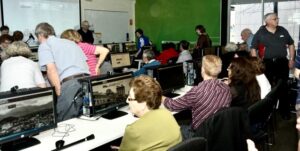
Thank you to those people who have written blogs and shared their family stories in the last 10 years. Finally, thanks to all the readers for your interest and support.
All photos of the launch taken by Michael Campbell.
Madeleine Regan
19 May 2024
